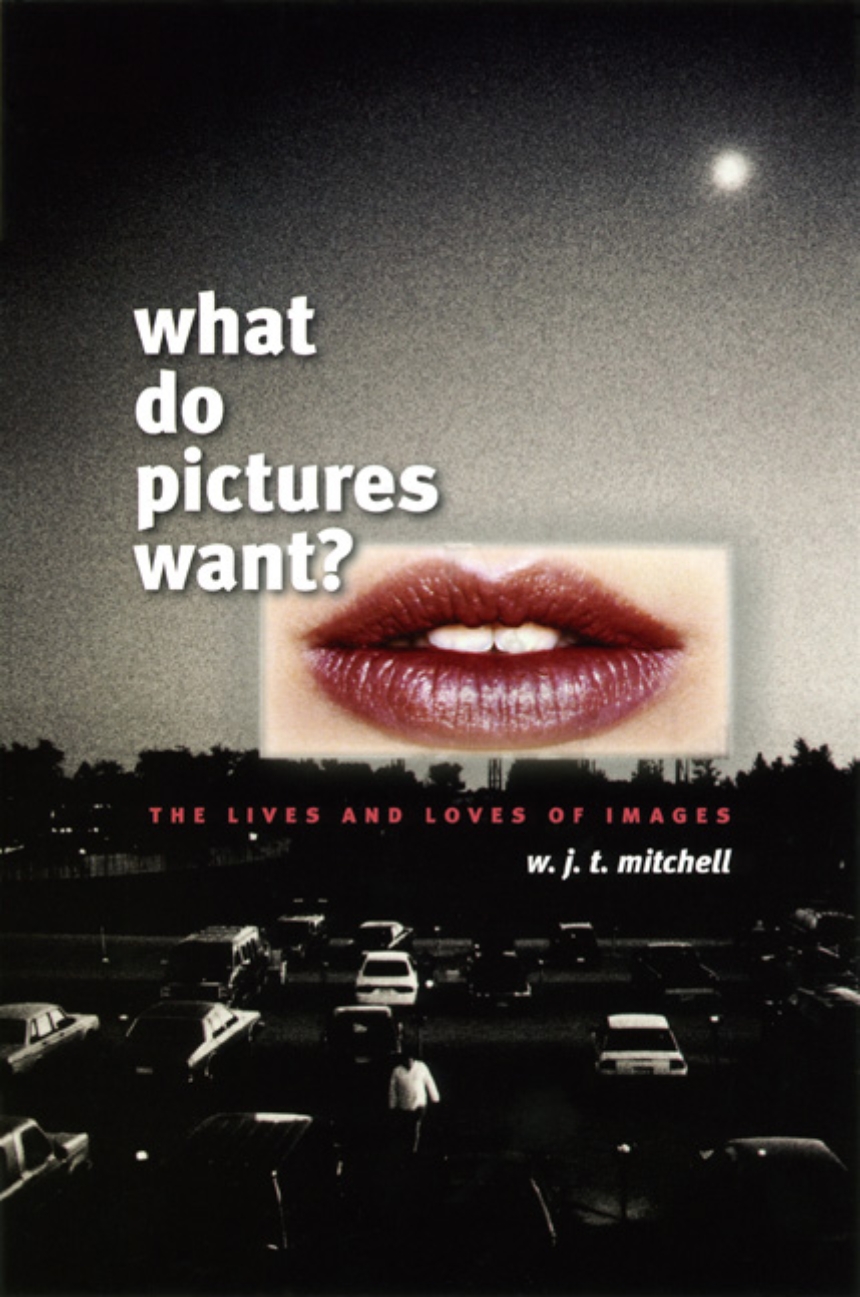What Do Pictures Want?
The Lives and Loves of Images
Why do we have such extraordinarily powerful responses toward the images and pictures we see in everyday life? Why do we behave as if pictures were alive, possessing the power to influence us, to demand things from us, to persuade us, seduce us, or even lead us astray?
According to W. J. T. Mitchell, we need to reckon with images not just as inert objects that convey meaning but as animated beings with desires, needs, appetites, demands, and drives of their own. What Do Pictures Want? explores this idea and highlights Mitchell’s innovative and profoundly influential thinking on picture theory and the lives and loves of images. Ranging across the visual arts, literature, and mass media, Mitchell applies characteristically brilliant and wry analyses to Byzantine icons and cyberpunk films, racial stereotypes and public monuments, ancient idols and modern clones, offensive images and found objects, American photography and aboriginal painting. Opening new vistas in iconology and the emergent field of visual culture, he also considers the importance of Dolly the Sheep—who, as a clone, fulfills the ancient dream of creating a living image—and the destruction of the World Trade Center on 9/11, which, among other things, signifies a new and virulent form of iconoclasm.
What Do Pictures Want? offers an immensely rich and suggestive account of the interplay between the visible and the readable. A work by one of our leading theorists of visual representation, it will be a touchstone for art historians, literary critics, anthropologists, and philosophers alike.
According to W. J. T. Mitchell, we need to reckon with images not just as inert objects that convey meaning but as animated beings with desires, needs, appetites, demands, and drives of their own. What Do Pictures Want? explores this idea and highlights Mitchell’s innovative and profoundly influential thinking on picture theory and the lives and loves of images. Ranging across the visual arts, literature, and mass media, Mitchell applies characteristically brilliant and wry analyses to Byzantine icons and cyberpunk films, racial stereotypes and public monuments, ancient idols and modern clones, offensive images and found objects, American photography and aboriginal painting. Opening new vistas in iconology and the emergent field of visual culture, he also considers the importance of Dolly the Sheep—who, as a clone, fulfills the ancient dream of creating a living image—and the destruction of the World Trade Center on 9/11, which, among other things, signifies a new and virulent form of iconoclasm.
What Do Pictures Want? offers an immensely rich and suggestive account of the interplay between the visible and the readable. A work by one of our leading theorists of visual representation, it will be a touchstone for art historians, literary critics, anthropologists, and philosophers alike.
“A treasury of episodes—generally overlooked by art history and visual studies—that turn on images that ‘walk by themselves’ and exert their own power over the living.”—Norman Bryson, Artforum
408 pages | 16 color plates, 84 halftones, 10 line drawings | 6 x 9 | © 2005
Art: Art Criticism, Art--General Studies, Photography
Literature and Literary Criticism: General Criticism and Critical Theory
Reviews
Table of Contents
List of Illustrations
Preface
Acknowledgments
Part One: Images
1. Vital Signs | Cloning Terror
2. What Do Pictures Want?
3. Drawing Desire
4. The Surplus Value of Images
Part Two: Objects
5. Founding Objects
6. Offending Images
7. Empire and Objecthood
8. Romanticism and the Life of Things
9. Totemism, Fetishism, Idolatry
Part Three: Media
10. Addressing Media
11. Abstraction and Intimacy
12. What Sculpture Wants: Placing Antony Gormley
13. The Ends of American Photography: Robert Frank as National Medium
14. Living Color: Race, Stereotype, and Animation in Spike Lee’s Bamboozled
15. The Work of Art in the Age of Biocybernetic Reproduction
16. Showing Seeing: A Critique of Visual Culture
Index
Preface
Acknowledgments
Part One: Images
1. Vital Signs | Cloning Terror
2. What Do Pictures Want?
3. Drawing Desire
4. The Surplus Value of Images
Part Two: Objects
5. Founding Objects
6. Offending Images
7. Empire and Objecthood
8. Romanticism and the Life of Things
9. Totemism, Fetishism, Idolatry
Part Three: Media
10. Addressing Media
11. Abstraction and Intimacy
12. What Sculpture Wants: Placing Antony Gormley
13. The Ends of American Photography: Robert Frank as National Medium
14. Living Color: Race, Stereotype, and Animation in Spike Lee’s Bamboozled
15. The Work of Art in the Age of Biocybernetic Reproduction
16. Showing Seeing: A Critique of Visual Culture
Index
Awards
The University of Chicago Press: Gordon J. Laing Award
Won
Modern Language Association of America: James Russell Lowell Prize
Won
